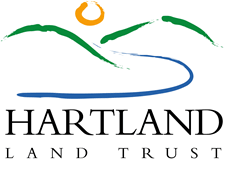Introduction
The forests of the Northeastern United States cover 926,000 square miles: an area far greater than those of the American West. Scientists consider this the most intact temperate deciduous and mixed forest region on Earth. We aim to protect this resilient landscape in a time of increased ecological disturbances. Without strategic vision and protection, individual core forests will dwindle and ultimately erode the ecological integrity of the region. Follow the Forest brings together conservation partners in Connecticut, Massachusetts, New York, and Vermont at an unprecedented scale. Through our combined efforts to reconnect and conserve forests, we can offset the impacts of climate change and protect this essential and resilient wildlife corridor against the persistent threat of forest fragmentation. Together, we can realize a shared vision that connects us to the places we love and the wildlife we share this land with.
Mission Statement
The Follow the Forest Initiative unites land trusts and communities to protect and connect Northeastern forests and create a wildlife corridor extending from the Hudson Valley to the boreal forests of Canada.
Who We Are
The Follow the Forest Initiative brings together communities, organizations, agencies, and donors to participate in a large, continental vision that can be translated to a local scale.
What We Do - Our Goal
Protect an additional 250,000 acres of forest habitat with an estimated 500 linkages between them by 2040. We focus on core forests (contiguous, interior forests of 250+ acres) and their linkages. This threshold for forest patches is a scientifically recognized minimum needed to sustain important woodland species. Securing wildlife linkages helps us form a corridor that can facilitate the movement of plants and animals between core forest areas.
Why We Do It
Forests act as natural filters, removing pollutants before water reaches streams, lakes, and reservoirs. Trees play a crucial role in processing carbon dioxide and other pollutants. If protected, terrestrial and wetland cores will support a diversity of fish, wildlife, and plants, and the ecosystems they depend upon. As our local ecosystems are affected by a changing climate and increasing development, forest cores have become crucial areas for wildlife migrating to new habitats. Wildlife relies on connected landscapes to migrate seasonally, maintain genetic flow, respond to climate change, and access food, water, and shelter.
Wildlife Linkages
Based on Follow the Forest's goal of protecting at least 50% of each core forest (contiguous, interior forests of 250+ acres) and one secure wildlife linkage connecting each core, Follow the Forest has developed a linkage assessment tool that relies on community science to ground-truth potential wildlife linkages. This helps us get a clearer picture of their functional connectivity for migrating wildlife and can inform conservation action. The exercise encourages volunteers to walk a section of road and visualize the path of animals across the landscape and the various barriers and stressors that roads present (ie. fast-moving cars, steep embankments, guardrails, fences). Wildlife is often getting funneled through pinch-points within the linkages we've outlined, and as climate change escalates, pinch-points are areas that, if further developed, could disproportionately restrict movement. Once volunteers have assessed the linkage and taken note of significant obstacles and areas where wildlife passage is most possible, the exercise encourages them to envision how the linkage can be secured (ie. through land conservation on both sides of a pinch-point) or where restoration or improved infrastructure would improve connectivity (ie. creating a culvert connecting a forested wetland fragmented by the road). The resulting set of refined linkages will allow us and Follow the Forest partners to better prioritize our conservation efforts. Help us identify priority areas for conservation by assessing a linkage near you!
Call to Action
We are looking to you – environmentally-minded citizens of this resilient forest corridor – to make a difference today. We encourage you to learn more about the Follow the Forest Initiative and about the scientifically-proven advantages of habitat connectivity. We can all use our voices to speak up for forests and the species that rely on connected habitats for survival



